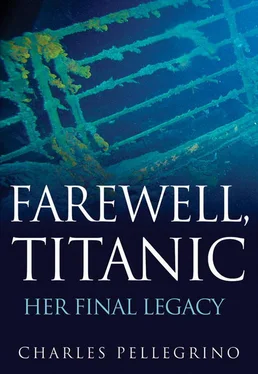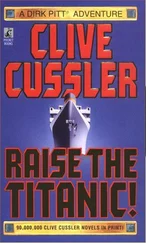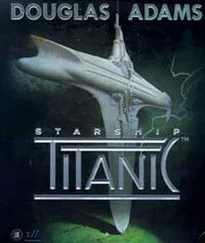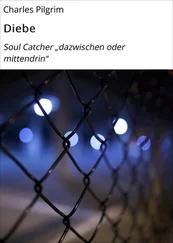On the bridge, quartermaster Robert Hitchens received the order and began immediately to respond. Murdoch had come running indoors from the starboard wing bridge—apparently even before Boxhall heard the three bells from the crow’s nest, for Boxhall did not see Murdoch outside, even though the open-air wing bridge on which Murdoch had been standing was directly in Boxhall’s path, barely ten paces ahead.
Three stories lower than the crow’s nest lookouts, Murdoch had been positioned nearer the sea’s surface, and even though he was not at the optimum viewing point of Neshan Krekorian, he was at a lower, better angle than the lookouts for detecting the telltale shadow climbing above the horizon and eclipsing the stars.
From Boxhall’s perspective, it was all over by the time he heard Murdoch’s order to Hitchens. Simultaneously with that order, the engine telegraph was ringing an order for evasive action, from the bridge to the engineers’ platform in the reciprocating engine room. Even as the impact occurred, Boxhall did not slow his stride toward the bridge. He felt the first jolts of the crash a startlingly short time after he heard the three bells from the crow’s nest.
From the moment the three-bell alarm was sounded, Boxhall had scarcely more than twenty feet to walk before reaching the bridge—and yet, during that brief interval of ten steps, Murdoch’s orders for turning the wheel could be heard, and the clash of ice and steel had already begun.
THE EXAMINATION
Boxhall would live to testify before the examiners (during the first of two official investigations into the loss of the Titanic , the American inquiry during the spring of 1912, followed quickly by the British inquiry). Boxhall stated that when he reached the bridge, he saw Murdoch still in the act of pulling the lever to close the watertight doors below. Fortunately—and contrary to self-perpetuating textbook dogma about the stop order disabling the rudder and all but guaranteeing that the Titanic could not be steered out of harm’s way—the ship had enough forward momentum, even with all three propellers stopped, to carry it through Murdoch’s avoidance maneuvers.
The point was moot; there was probably not enough time for the propeller blades to diminish the efficiency of the rudder by coming to a stop and switching a normally propulsive flow of water to chaotic turbulence and drag effects. According to Hitchens, Murdoch rushed in from the starboard wing bridge and gave the order, “Hard astarboard!” Sixth Officer James Moody repeated the order and Hitchens turned the wheel—“but during [this] time,” Hitchens told an American examiner, “she [the ship] was crushing the ice—for we could hear the grinding noise along the ship’s bottom.”
Lookout Frederick Fleet told the same examiner that he rang the crow’s nest bell and immediately called the bridge by telephone. The conversation was very brief.
“What did you see?” a voice on the other end asked.
“Iceberg right ahead!” said Fleet.
“Thank you,” came the reply, and the officer hung up the receiver.
The interval between Fleet’s ringing the bell and hanging up the phone could have occupied only five to eight seconds. Within this time frame—in which the countdown to impact probably began with Murdoch sighting the iceberg at least three seconds ahead of the crow’s nest lookouts—Fleet thought the ship had started turning to port, and he watched the iceberg strike ahead of him, along the starboard bow. All of this occurred while he was still on the phone.
Fleet would later reiterate for Second Officer Charles Lightoller that “practically at the same time” he struck the bell, he noticed the ship’s head moving under the helm. If Fleet’s impression was correct, the Titanic began turning away from the danger even before Hitchens could turn the rudder, which suggests that the bow was striking the iceberg just as the crow’s nest lookouts sighted it. Fleet believed that the first blow to the ship came from a submerged portion of the iceberg, because the Titanic not only turned toward the port side but also seemed to be lifted slightly in that direction by the ice.
At the moment Fleet rang the bell, quartermaster Alfred Olliver was standing between the second and third smokestacks, making adjustments to the compass tower’s lights. Olliver immediately put down his tools and ran forward along the deck. He arrived on the bridge seconds after seeing the iceberg grinding along the starboard side, its pointed tip rising toward the boat deck. It seemed to him that the Titanic had begun to heave away from the ice while Murdoch shouted orders to the helm, but Olliver would testify later that he could not discern whether the engines and the rudder really changed the Titanic ’s direction or whether “it was hitting the iceberg that stopped the way of the ship.”
From the moment the iceberg was sighted, there was very little that could be done to save the ship. Conceivably, there was no time even to begin steering, and the Titanic struck at precisely the angle at which it was aimed when the countdown to zero began.
Quartermaster Olliver stood by in silent disbelief as First Officer Murdoch assured Captain Smith that all of the watertight doors were closed. Olliver also witnessed the skipper ordering the engines forward at half speed, for several minutes, during which the ship probably advanced about half a mile.
• • •
Able Seaman Joseph Scarrott had felt the entire forecastle shiver, almost simultaneously with the confusion of three bells warning of danger straight ahead, and amid enough vibration and pummeling of the hull to wake anyone in the berths below. Scarrott ran down several decks to tell a friend that something had just gone frighteningly amiss. A groggy voice told him to go away and not to come back unless it turned out to be something important.
By the time Scarrott climbed to the top of the forecastle, the Titanic was steaming smoothly forward again. There was freshly broken ice lying on the forecastle roof, and whole truckload amounts of ice were strewn along the starboard side of the well deck. When Scarrott looked over the rail, he saw an iceberg that he believed must have been the one the bow had just struck, passing not very far behind the bridge, but this could not possibly have been the case.
At a velocity of nearly forty feet per second, the iceberg that created the actual lesions and punctures in the hull had passed from the point of the bow, beyond the bridge and almost to the second smokestack, in all of ten seconds. Twelve seconds after that, it passed Quartermaster Rowe on the after-bridge, then disappeared astern. The able seaman’s trip two or three decks down to the crews’ berths, his waking of a friend, the quick rebuke, and his return to the top deck took considerably longer than the ten-second interval in which the iceberg would have remained plainly visible from the forecastle.
Scarrott recalled for the examiners that several “minutes” might have been involved; and actual minutes must indeed have been involved in his mission of warning the sleeping crew on the lower decks. By the time he returned to the top, it seemed to him as though the ship was still trying to make an evasive, circling maneuver around the iceberg. Then the Titanic stopped, very near to its final resting place.
What Scarrott most likely saw was a second iceberg; because very soon after impact, the Titanic was steaming forward at half speed, through an ice field no less densely populated than the eastern fringe of bergs that Neshan Krekorian had observed nearly forty-five minutes earlier. The sighting of a second iceberg (if this was indeed what Scarrott saw) was certainly a powerful enough signal to the bridge that the Titanic must now be surrounded by hull-piercing bergs and that this would diminish even the hope of sighting another ship and steaming toward it, should the damage turn out to be life-threatening.
Читать дальше











